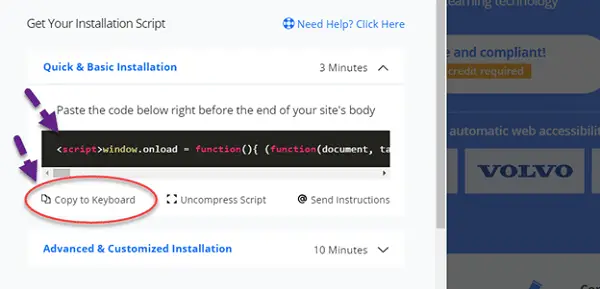Line25 is reader supported. At no cost to you a commission from sponsors may be earned when a purchase is made via links on the site. Learn more
While network technologies have enabled people in different parts of the world to relay data and information, there are still some segments of the global population that can’t use the internet.
A study of 10 million web pages by web accessibility platform called accessiBe revealed that most sites fail to fully comply with accessibility guidelines. This makes it difficult for people with disabilities to use the internet and enjoy the benefits of being online.
To address this, accessibility laws such as the Americans with Disabilities Act (ADA) are now being applied to websites to compel site owners to make their websites usable to persons with disabilities. Companies that fail to comply can face lawsuits and pay hefty fines.
A resource called the Web Content Accessibility Guidelines (WCAG) developed by the World Wide Web Consortium (W3C) outlines the technical standards and implementation techniques that can help site administrators, developers, and evaluators comply with web accessibility regulations such as the ADA and make websites usable to persons with disabilities.
How to comply
To achieve compliance with the WCAG, site owners must follow guidelines that are based on four principles.
Perceivable. Websites must offer a user interface and provide information that users can easily perceive. Content should be easily seen and heard by users. Site owners can achieve this by providing text alternatives for all non-text content to cater to people with different disabilities. Media content should have captions and transcriptions. Content should also be presented in different ways without losing information such as allowing pages to be displayed in portrait and landscape orientations.
Operable. Websites must make all their content operable through a keyboard and ensure navigability by helping users perform actions and find content easily. If ever the page involves dynamic or animated content, users must also be given enough time to use and read content. Animation and graphics should be configured to avoid triggering seizures.
Understandable. Websites must have content that is easy to understand. They should offer content that is readable and comprehensible by using simple language or providing mechanisms to define abbreviations, idioms, and jargon. User interface elements should also be intuitive and have proper labels and instructions to prevent mistakes among users.
Robust. Websites must be robust enough to ensure compatibility with assistive devices. Web pages must have parsed data.
The WCAG also has three levels of conformance or levels of success criteria: A (lowest), AA, and AAA (highest) to ensure that sites can cater to persons with different disabilities. The guidelines require websites to undergo evaluation and testing to check if all its site elements have accessibility functionalities that satisfy at least all the WCAG Level A success criteria.
Challenges to compliance
However, compliance has its challenges. The WCAG alone is quite comprehensive and achieving even Level A success criteria can involve significant effort. Every site element must be thoroughly reviewed to identify accessibility issues. Doing this manually to a content-rich website with hundreds, if not thousands, of pages of content can be a very tedious task.
Developers may also have to be involved to perform code changes and add new functionalities since the higher levels of conformance require implementing features that provide support to users with different disabilities. This may include providing sign language interpretation, navigation through special input devices, and context-sensitive help.
Upon the integration these functionalities, testing must also be done to ensure that the websites meet the accessibility guidelines. This can require the use of specialized tools or engaging site evaluators. Performing such remediation requires time and resources to implement that not all organizations, especially smaller ones, are capable of spending.
AI to the rescue
Fortunately, there are now web accessibility platforms such accessible that can help organizations to quickly and easily achieve compliance. The platform leverages artificial intelligence (AI) to automatically scan accessibility issues and apply WCAG standards to sites and help site owners become ADA-compliant easily.
The aforementioned accessiBe, alongside other solutions like Audio Eye the previously reviewed UserWay allow site administrators to enjoy the following benefits:
Easy installation. Unlike manual remediation efforts that can take months, using a software like accessiBe or Audio Eye allows site owners to fix accessibility issues instantly. They simply have to embed a line of installation script in their site to enable the platform to make their websites comply with the WCAG within 48 hours.
Comprehensive remediation. For instance, sites that use accessiBe have a 96 percent WCAG success rating. This is due to the platform’s advanced AI technology that parses websites and gives them functionalities to accommodate the various needs of people with different disabilities.
accessiBe provides support for various assistive devices. According to Web Designer Depot, accessiBe uses OCR and IRIS technologies to process images and to provide alternative text description for screen readers used by the visually impaired. It also allows users who struggle with using a mouse to navigate websites just by using the TAB and ENTER keys. It is not clear whether AudioEye can create Alt Text but Userway cannot.

